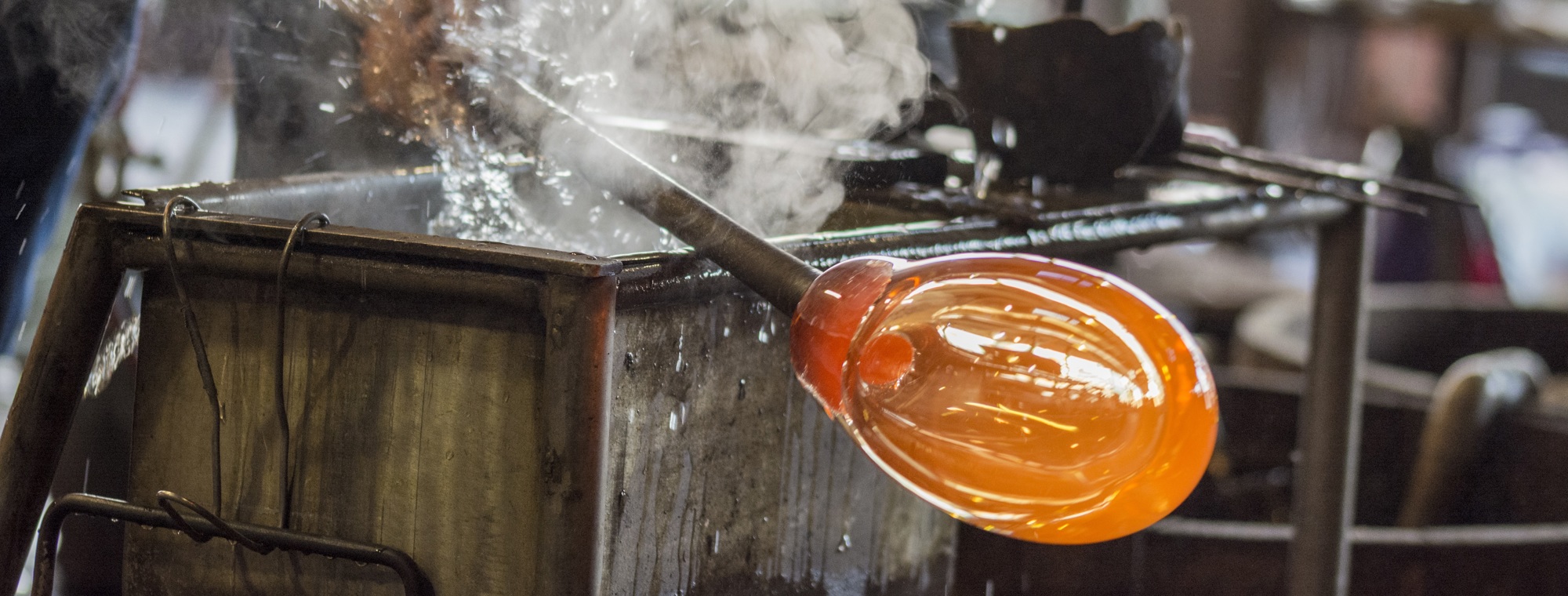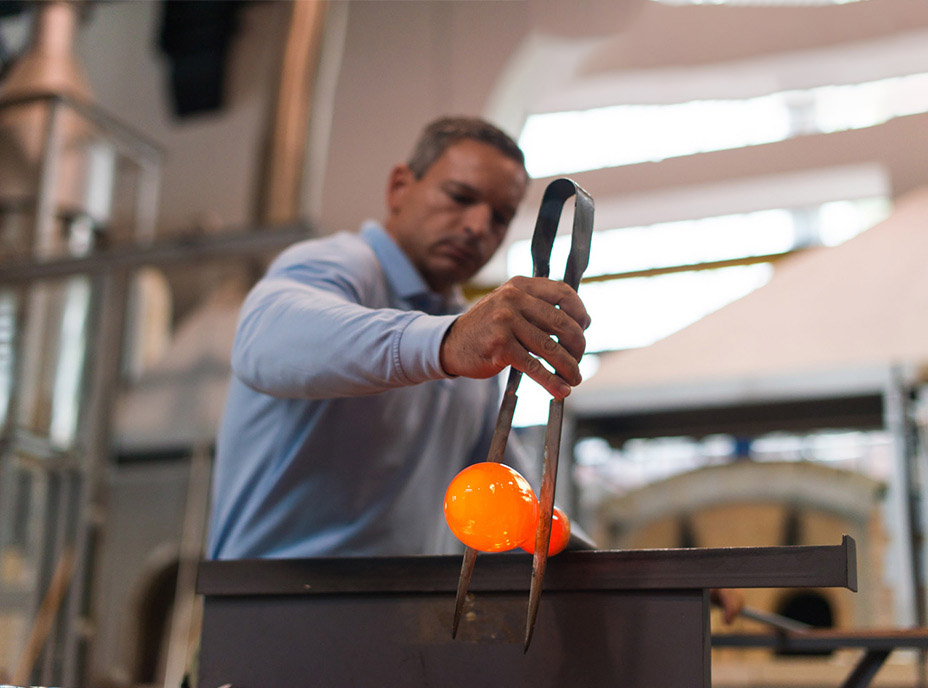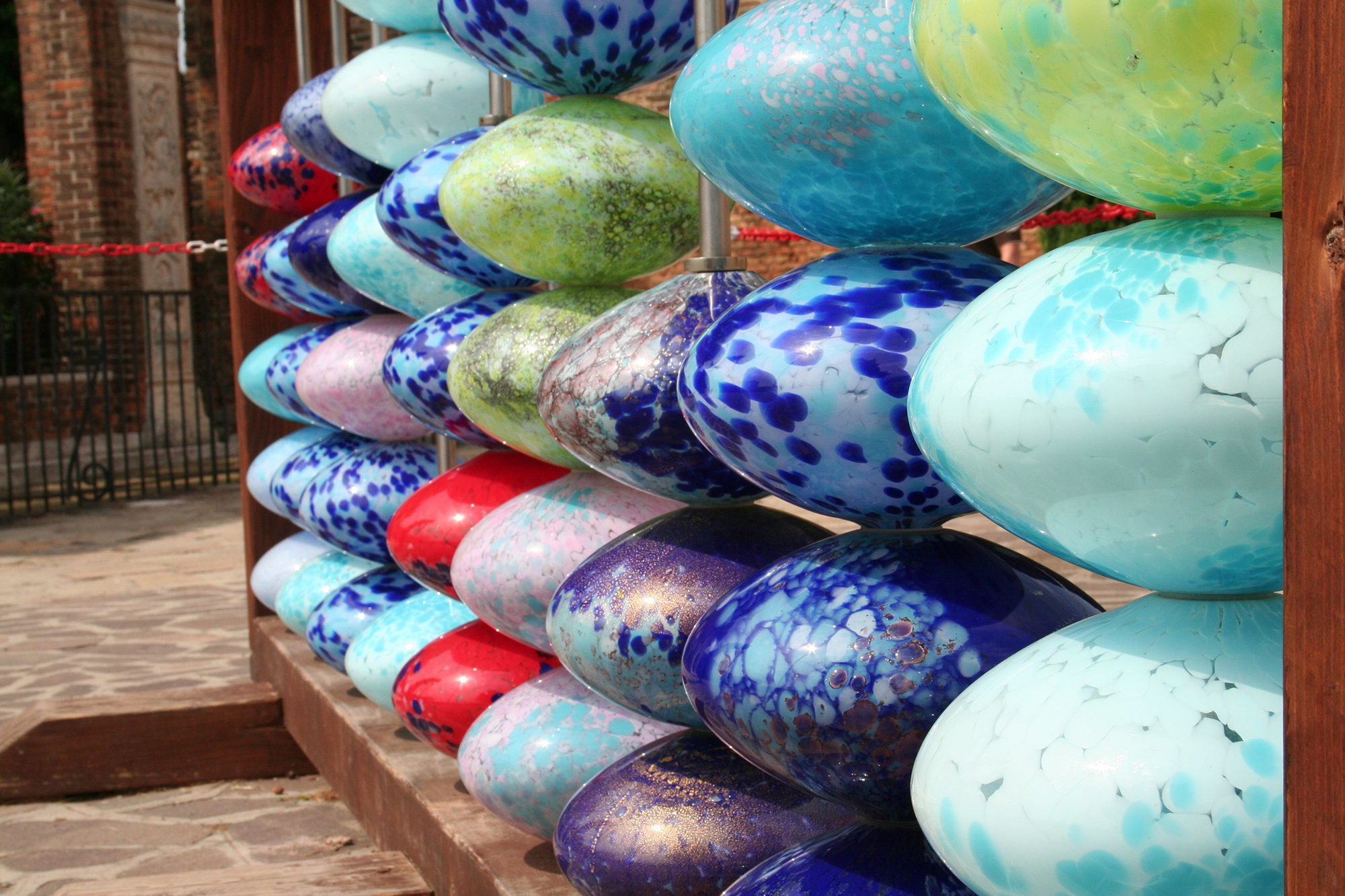History of Murano Glass in Italy

Venetian Glass in Italy
Documents dating back to the 10th century note Venetian Fioleri, or bottle-makers, who produced glass bottles and vials. In 1224, the first trade association for glassblowers was formed in Venice. A government mandate in the late 12th century led all Venetian glass production to move to the island of Murano. Today, the Venitian island of Murano is world-renowned for its elaborate glass creations.
Quick History of Glass in Murano, Italy
Glass production in the Venetian lagoon goes back as early as the 10th century. However, the Venitian island of Murano is specifically world-renowned for its elaborate glass creations. But why is Murano glass special? The funny thing is that all glass production in Venice moved to Murano by 1291 due to a government mandate.
This move was likely mandated likely for two reasons. The first was that the extremely hot furnaces used by glassmakers were a major fire risk for the densely-populated city of Venice. By moving furnaces across the lagoon, officials hoped to protect the city from potentially catastrophic fires.
The second, perhaps more substantial, was to protect trade secrets. Venetian glassmakers essentially had a monopoly on European glass production, so government officials wanted to ensure that other countries wouldn’t steal their techniques.

Visit and learn from the few remaining Venetian glassblowing masters hard at work in a traditional workshop in Venice's heart. The glassblowers will demonstrate the techniques passed on through the generations since the 15th century to create the beautiful, refined masterpieces for which Venice is justifiably renowned. On this MAKE TRAVEL MATTER® Experience, you’ll be enchanted by their skill. Leave knowing that you’ve played a part in helping to support the long-term survival of the workshop and the preservation of this precious craft tradition through your visit.
This meant that glassmakers were not allowed to travel outside the Republic, nor were foreign glassmakers allowed inside. Eventually, however, the secrets got out, and by the 16th century, when Venice had declined as a commercial power, glassmakers in other European countries were producing work in the Venetian style.
Glassworkers in Murano suffered another blow when Napoleon conquered Venice and abolished its guilds in 1797. And in the early 19th century, the Habsburg empire, which then ruled Venice, raised prices on importing raw materials and exporting glassware.
Fratelli Toso Venetian Glassmaking Revival
In 1854, six brothers—the Toso family—breathed new life into the industry when they opened Fratelli Toso, a firm specializing in traditional Venetian glassmaking techniques. An exhibition in 1864, along with international trade shows, renewed interest in the work produced in Murano, making it a destination for art lovers.
Murano Glass Special Techniques
Cristallo, Millefiori, Murine, Latticino, and Avventurina Methods
Master craftsman Angelo Barovier perfected a process for producing Cristallo, clear glass, in the 15th century, which paved the way for glassworkers’ innovative drinking glasses in the 16th and 17th centuries. These glasses often featured intricately-detailed symmetrical wings on either side of the stem.

The whole game changed when glassworkers discovered a way to add color to the glass. The addition of vibrant colors led to the popularity of the Millefiori technique. The technique bonds different colored glasses together to create intricate patterns.
Other popular techniques included Murine, which creates a mosaic effect and was used by early glassmakers to mimic the shape and style of Roman vases. Latticino glass features elegant striped patterns, often made from white glass, while the Calcedonio technique allows glassblowers to simulate marble and semiprecious stones with glass.
The Avventurina method infuses metal particles into the glass to create an eye-catching sparkling effect, making it extremely popular for jewelry and home décor.
The Best Things to Do in Venice
Venitian Mirrors
The Lattimo process and "gold dust" technique
Venetian glassmakers of the early 16th century were also renowned for their mirrors. Most of these were custom-made for nobility and became a luxury found in palaces across Europe. Because the demand for the gorgeous glass mirrors exceeded the supply, other glassmakers began to produce replicas. Still, Venetian mirrors, the purest mirrors in the world, set the bar very high for the other mirror manufacturers.
Venetian mirrors were considered so exquisite because of the highly protected manufacturing processes developed by the Murano glass artisans. One process was the "gold dust" technique of embedding gold leaf into the mirror before the glass solidified. The other was the Lattimo process that produced translucent milky-white glass. Through masterful manipulation of both techniques, elements like the etchings of flowers and ribbons and the artful borders are possible.
Frequently Asked Questions About Murano Glass
Genuine Murano glass is only made in Murano, Italy. All glassware produced in Murano is certified with the trademark Vetro Artistico, which ensures that products are genuine.
Venetian mirrors are considered special because of the "gold dust" and Lattimo manufacturing processes developed by Murano glass artisans.
Although master techniques make the glass seem delicate and light, Murano glass is pretty sturdy. The heavier and more substantial the glass, the more reflective it is. This is one reason you want to hold any purchases of Murano glass in your own hands before you buy it. You'll note a certain heft to it, which truthfully helps give Murano glass its exceptional reflective quality.
Murano is not a brand name for glass. Murano glass refers to the island of Murano in Italy, the only place Murano glass is produced.



















